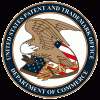Advanced Patent Prosecution Workshop: Chemical & Pharmaceutical Claim Drafting
 Last week, I attended PLI’s Advanced Patent Prosecution Workshop 2011 in New York where an esteemed panel of experts offered hands-on claim drafting and amendment writing techniques. The program was organized into four technological sections: Biotechnology, Chemical/Pharmaceutical, Electrochemical and Electronics/Computers. I attended the Chemical/Pharmaceutical segment where Michael Davitz, Partner at Axinn, Veltrop & Harkrider and Practice Center Contributor, discussed Chemical and Pharmaceutical Claim Drafting. Here are some highlights from his presentation….
Last week, I attended PLI’s Advanced Patent Prosecution Workshop 2011 in New York where an esteemed panel of experts offered hands-on claim drafting and amendment writing techniques. The program was organized into four technological sections: Biotechnology, Chemical/Pharmaceutical, Electrochemical and Electronics/Computers. I attended the Chemical/Pharmaceutical segment where Michael Davitz, Partner at Axinn, Veltrop & Harkrider and Practice Center Contributor, discussed Chemical and Pharmaceutical Claim Drafting. Here are some highlights from his presentation….
- Development of a Patent Portfolio – patent portfolio is developed in the context of a business plan and where in the life cycle the product is.
- Generic Player – differentiate product from innovator and create difficulty for competitors, other generics.
- Innovator – at what stage is the development? Integrate FDA and patent filing strategies and develop patents with an eye towards forcing infringement.
- Strategies for Early-stage and Late-stage Products
- Developing a Portfolio of both Listed and Unlistable Patents
- Start with the end-game and plan backwards (more…)
Three References PLUS Predictable Variation Doom Utility Lighter Claims
 Written by Brandon Baum , of baum legal and Practice Center Contributor.
Written by Brandon Baum , of baum legal and Practice Center Contributor.
Some have suggested that the Federal Circuit’s recent decision in Tokai Corp. v. Easton Enterprises, Inc., No. 2010-1057, -1116 (Fed. Cir. Jan 31, 2011), signals a raising of the bar to show nonobviousness post-KSR. See, e.g., Quinn, KSR Fears Realized: CAFC Off the Obviousness Deep End; Patently-O, The Teeth of KSR: Obviousness on Summary Judgment. This author disagrees.
The technology at issue in Tokai is straightforward: a child-safety mechanism for use on a “utility lighter,” the type of lighter used to light a barbecue or pilot light. The safety mechanism consists of a spring-loaded locking lever that must be unlocked with one finger while simultaneously depressing the trigger to light the flame with another. Although two-finger safety mechanisms had been used in prior art cigarette lighters, they had never been used with a utility lighter prior to the patentee’s application. Nevertheless, the panel majority of Judges Lourie and Bryson upheld the district court’s determination on summary judgment that the patents-in-suit were obvious. (more…)
02.7.11 | Patent Litigation, posts, prior art | Stefanie Levine
US Patent Office Issues Update to KSR Examination Guidelines
Written by Gene Quinn (of IPWatchdog.com and Practice Center Contributor)
 The United States Patent and Trademark Office has provided an update to its Examination Guidelines concerning the law of obviousness under 35 U.S.C. 103 in light of precedential decisions from the United States Court of Appeals for the Federal Circuit issued since the 2007 decision by the United States Supreme Court in KSR Int’l Co. v. Teleflex Inc. The Updated KSR Examination Guidelines were published today in the Federal Register, and in response to the requests of many stakeholders the USPTO has included additional examples to help elucidate the ever-evolving law of obviousness. These guidelines are intended primarily to be used by Office personnel in conjunction with the guidance in the Manual of Patent Examining Procedure. The effective date of the these new Guidelines is September 1, 2010, but members of the public are invited to provide comments on the 2010 KSR Guidelines Update. The Office is especially interested in receiving suggestions of recent decisional law in the field of obviousness that would have particular value as teaching tools.
The United States Patent and Trademark Office has provided an update to its Examination Guidelines concerning the law of obviousness under 35 U.S.C. 103 in light of precedential decisions from the United States Court of Appeals for the Federal Circuit issued since the 2007 decision by the United States Supreme Court in KSR Int’l Co. v. Teleflex Inc. The Updated KSR Examination Guidelines were published today in the Federal Register, and in response to the requests of many stakeholders the USPTO has included additional examples to help elucidate the ever-evolving law of obviousness. These guidelines are intended primarily to be used by Office personnel in conjunction with the guidance in the Manual of Patent Examining Procedure. The effective date of the these new Guidelines is September 1, 2010, but members of the public are invited to provide comments on the 2010 KSR Guidelines Update. The Office is especially interested in receiving suggestions of recent decisional law in the field of obviousness that would have particular value as teaching tools.
The Examination Guidelines Update correctly explains that every question of obviousness must be decided on its own facts, thus it is the intent of the Office to “clarify the contours of the obviousness inquiry after KSR, and help to show when a rejection on this basis is proper and when it is not.” The 2010 KSR Guidelines Update provides a ‘‘teaching point’’ for each case discussed, and there is a table listing many of the cases and their teaching points, which can be found on the last two pages of the roughly 17 page Federal Register Notice. Perhaps this table was intended to be all inclusive, but I do not see, for example, Ball Aerosol v. Limited Brands, 555 F.3d 984 (Fed. Cir. 2009) in the table. (more…)
09.7.10 | Patent Issues, Patent Litigation, posts, USPTO | Stefanie Levine
Bilski Aftermath: Will Europe’s “Technical Effect” Test Become the Law in the U.S.?
Robert Hulse, of Fenwick & West LLP, Practice Center Contributor and PLI Faculty member, discusses what the future may look like for business method patents:
I think most patent practitioners and applicants who have been following this case believe that we dodged a bullet, as the Court’s decision was about as good as could have been expected. The Court removed the Federal Circuit’s overly rigid application of the machine-or-transformation (MOT) test as the sole test for patent eligible-subject matter, but it retained the test as a useful indication of whether a claim meets the subject matter requirement. (In this respect, the Bilski decision is much like the Court’s decision in KSR a few years ago, where the court kept the teaching-suggestion-motivation (TSM) test, but held that it was just one of many useful ways to evaluate a claim for its compliance with the nonobviousness requirement.) The benefit to applicants is that we can continue to rely on compliance with the MOT test by reciting a machine or transformation, subject to the “post solution activity” and “meaningful limits” considerations, while not being completely constrained by that test.
The Court also declined to exclude business methods from patent-eligible subject matter, although four justices (including Stevens, who is leaving the Court) would have done so. This means that companies who innovate to create new ways of conducting business can continue to protect their inventions. Excluding business methods for patent-eligible subject matter would have created more problems than it solved, not the least of which would have been how to define a “business method.” (more…)
Top 10 Patent Issues for Patent Practioners
 I recently asked Thomas Creel, of Thomas L. Creel P.C., former patent law professor for 20 years at Columbia University Law School, that with all the latest developments in the patent community including the rebirth of patent reform, the recent court cases regarding what is patentable subject matter and the proposed changes in PTO procedures, what are the top 10 areas of interest for Patent Practioners right now? Here is what he had to say….
I recently asked Thomas Creel, of Thomas L. Creel P.C., former patent law professor for 20 years at Columbia University Law School, that with all the latest developments in the patent community including the rebirth of patent reform, the recent court cases regarding what is patentable subject matter and the proposed changes in PTO procedures, what are the top 10 areas of interest for Patent Practioners right now? Here is what he had to say….
1. Economy – There’s been a lot of talk about how the economy has and is changing the practice of law, particularly in private practice. For example, new billings methods have been proposed to replace the hourly billing traditional system. Have there been discernable economic and structural changes which have affected the patent practitioner, and how are they likely in the future to affect him or her? For example, what is the future of the big boutique law firms (such as Finnegan, Henderson; Kenyon & Kenyon; Fitzpatrick, Cella, etc.) vs. the IP sections of large general firms? How about large corporations- has the economy affected the filing of patent applications or the handling of litigation? Another aspect of this might be what the average charge is for prosecution, litigation, licensing, etc. (more…)


No Comments
07.18.11 | biotechnology patents, Claim Construction and Markman Hearings, posts | Stefanie Levine